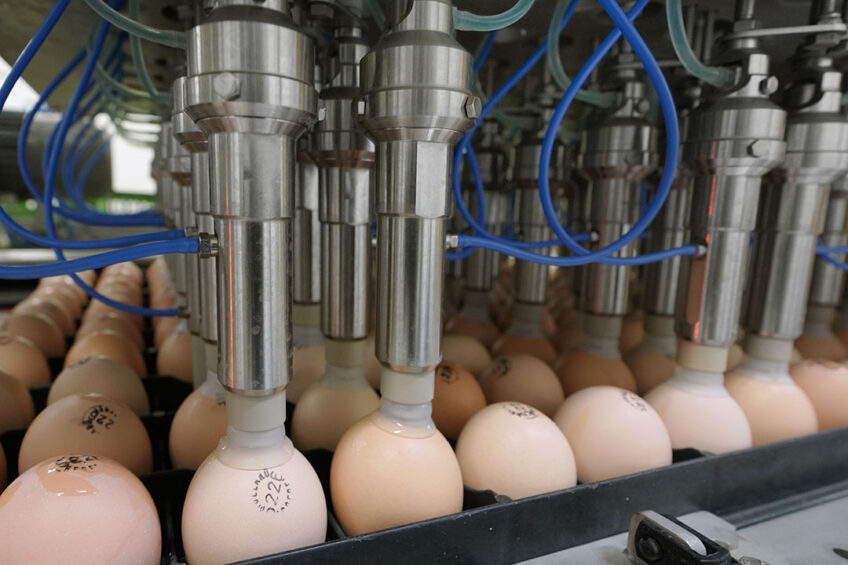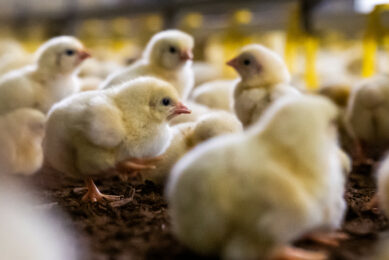In-ovo feeding technology of phytogenics

Phytogenic feed additives are cost-effective feed additives with proven positive effects on poultry growth rate, nutrient digestibility and gut health. This article discusses the potential of in-ovo feeding of phytobiotics during the incubation period of broilers.
In broilers, the egg composition and micro-environment affect the growth of the embryo. However, the limited nutrients available for the development of embryos may inhibit newly hatched chicks from growing and developing to their full potential. In-ovo feeding technologies can provide extra nutrients.
What is in-ovo feeding technology?
The incubation and neonatal stages comprise about half of the broiler’s productive lifetime. The period between embryonic day 18, and day 4 post hatch is critical for survival, growth and immune system development in broilers. Using in-ovo feeding technology, liquid feed components are injected into an egg’s amnion several days before hatching. Around embryonic day 18, the chick consumes the amniotic fluid prior to internal pipping. At a later stage of development, the nutrients supplemented to the developing embryo provide a constant supply of vital nutrients during the first 4 days of the post-hatch phase, promoting metabolism and gut development.
The site of injection, timing and type of biological substance affect the efficacy of in-ovo feeding. The best site for injection is amnion due to its ability to aspirate and digest the nutrients. A typical injection depth to target the amnion is 2.49 cm from the top of the big end of the broiler hatching egg.
Benefits of in-ovo feeding technology
One of the potential benefits of in-ovo technology is stimulating favourable immunological responses in chicks, thus improving disease resistance. Furthermore, in-ovo feeding technology mitigates pre- and post-hatching nutritional deficiencies that chicks undergo due to the transition from embryonic yolk nutrition to exogenous feeding. In-ovo administration of amino acids, vitamins and trace elements enhances the development of immune system, muscles and other tissues. Furthermore, in-ovo administration of probiotics or phytogenics stimulates the colonisation of beneficial gut microbiota, promotes gut-associated lymphoid tissue and improves gut health.
In-ovo phytogenics provide energy for the embryo
After incubation, energy is stored in the embryo of fast-growing chicks for rapid growth and development. Then, during the last phase of embryo development specifically between days 14 and 18 of incubation, the chick depletes the stored energy through synthesis of new glucose in the yolk sac and liver. The glycogen produced is then stored in the liver, muscle and yolk sac for hatching purposes and growth and development post-hatching. Providing various phytogenics in the embryonic development phase through the eggshell ensures proper energy for optimal growth and development of the chick embryo.
Impact on hatchability
In-ovo injection of phytogenics directly into the egg during the incubation period is a promising strategy to improve the hatchability and post-hatch performance of broilers. Injection of Manihot esculenta extract solution on day 18 of incubation improves hatchability and reduces the total incubation duration. In-ovo injection of grape seed, clove, cinnamon, and garlic extract increases hatchability, but in-ovo administration of nano curcumin reduces hatchability.
Impact on growth performance
Injection of Manihot esculenta extract solution on day 18 of incubation increases feed intake and the weights of one-day-old chicks. In-ovo pollen extract injection into the amniotic fluid of fertile broiler eggs on day 16 of incubation increases chick weight. In-ovo feeding of black cumin into the airspace of the egg at 17 day of incubation improves the final weight of the broilers and lowers the feed conversion ratio. In-ovo feeding of nanocurcumin improves feed intake from days 1 through 24. In -ovo supplementation of Moringa oleifera leaves at day 18 of incubation increases body weights. In-ovo injection of clove, thyme, and cinnamon on day 10 of incubation improves weight gain and feed conversion ratio.
Concluding remarks
In-ovo feeding of phytogenics is a promising method that can be used to improve hatching as well as post-hatch growth performance of broilers. However, further research is needed to create standardised procedures and recommendations for in-ovo supplementation of phytogenetics.
This article is based on the publication: Oluwaseun Ayomide Akosile, Festus Olasehinde Kehinde, Aderanti Ifeoluwa Oni, Oyegunle Emmanuel Oke, Potential Implication of in-ovo Feeding of Phytogenics in Poultry Production, Translational Animal Science, Volume 7, Issue 1, 2023











